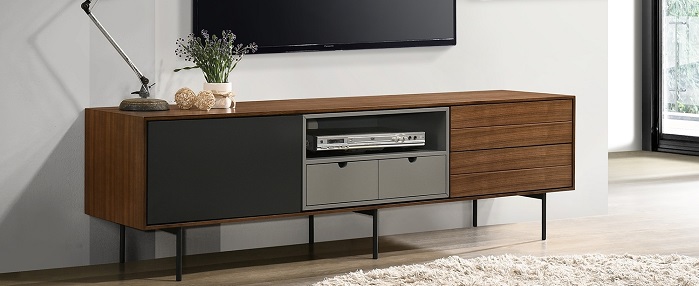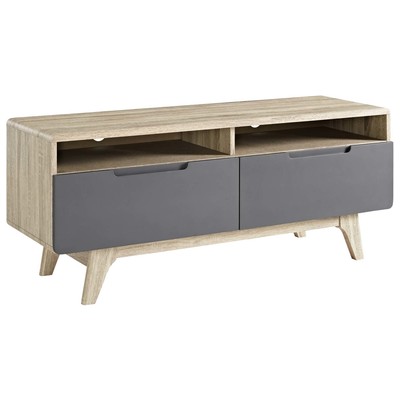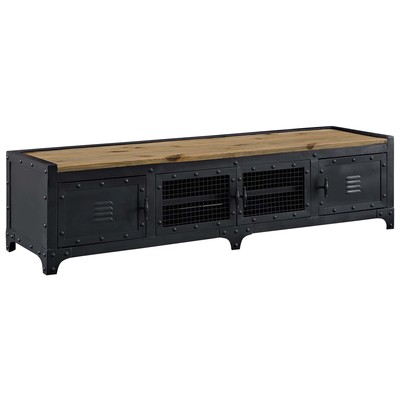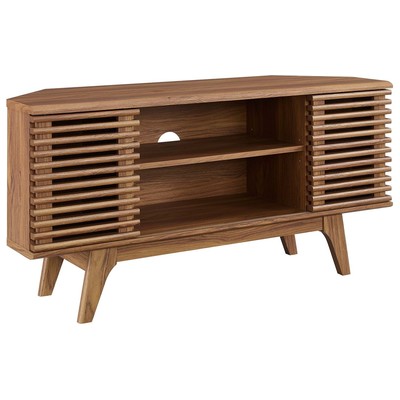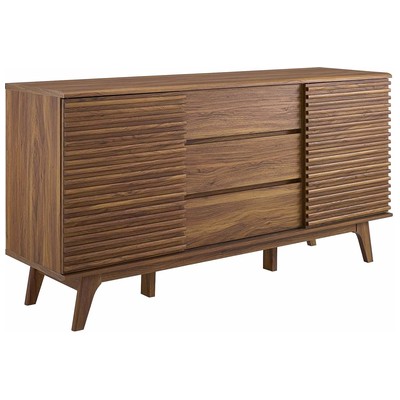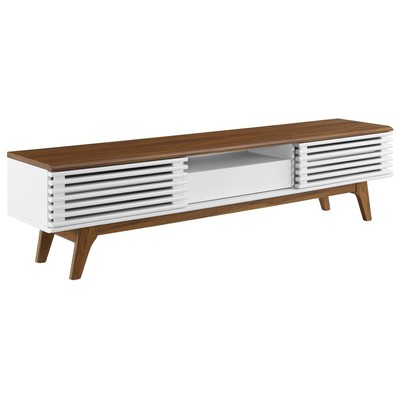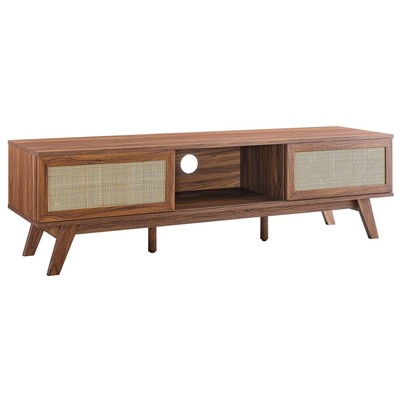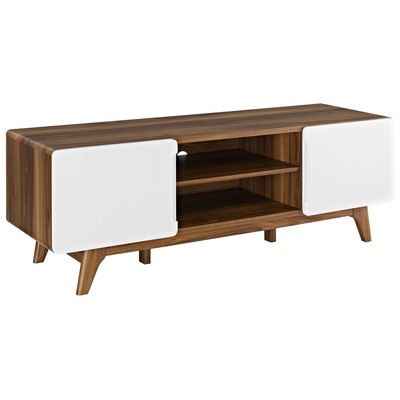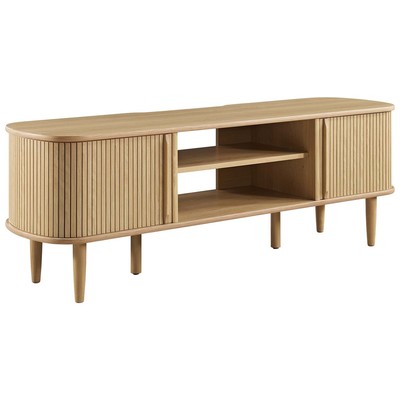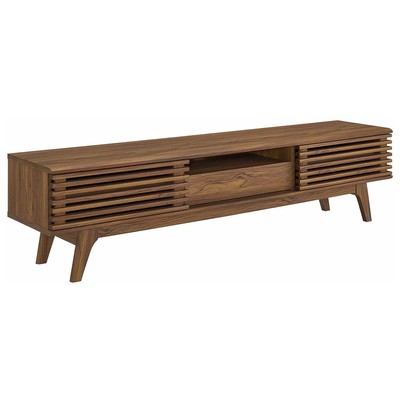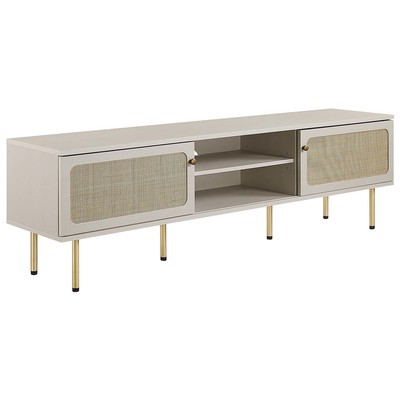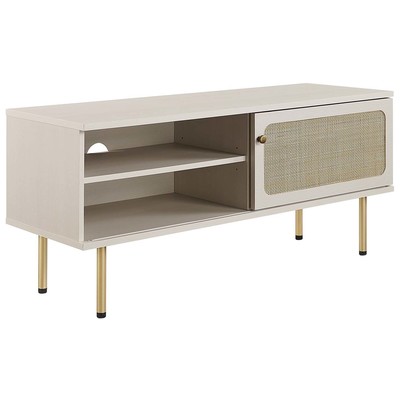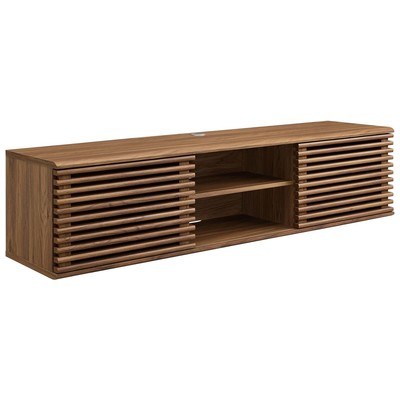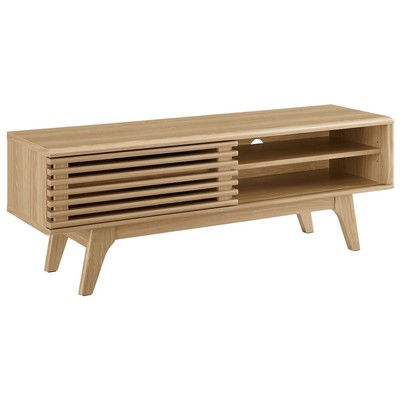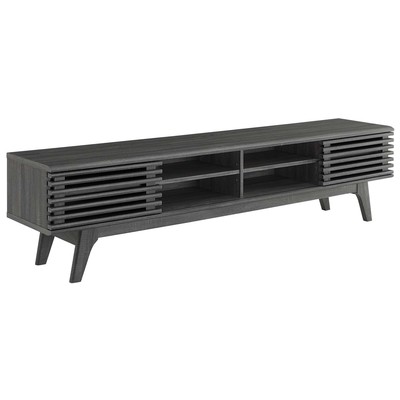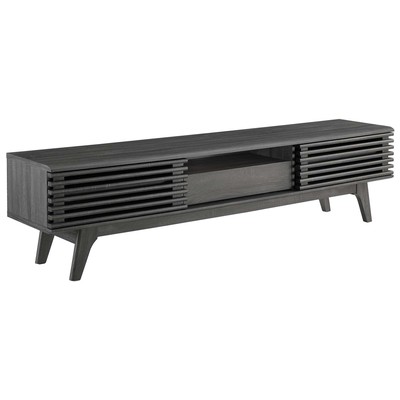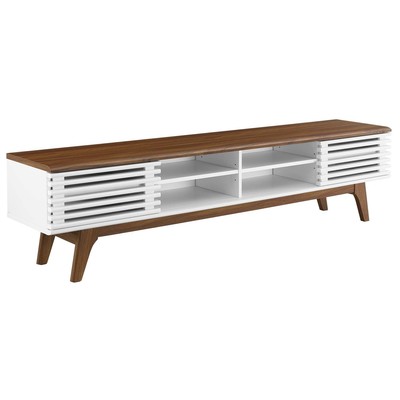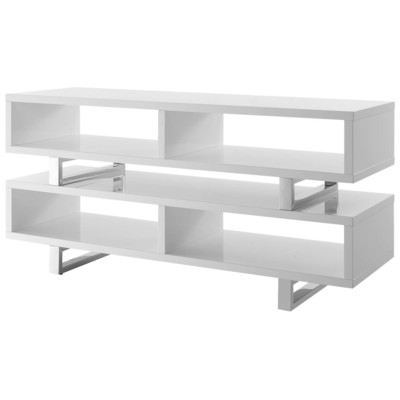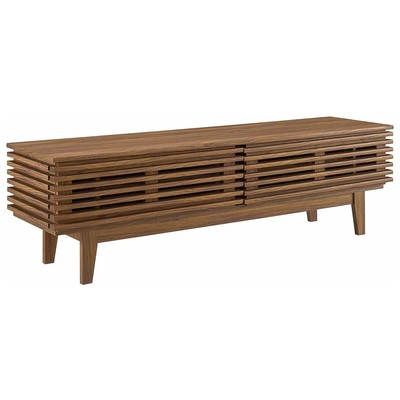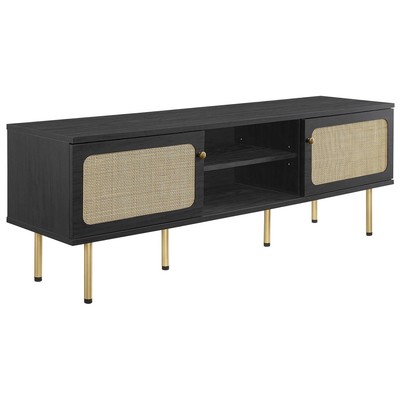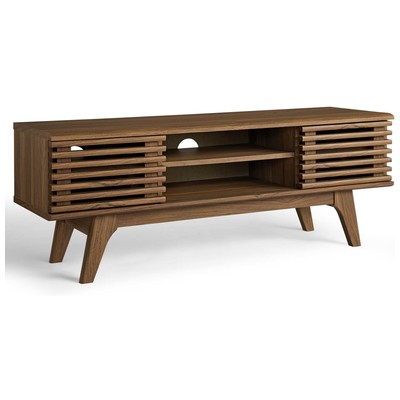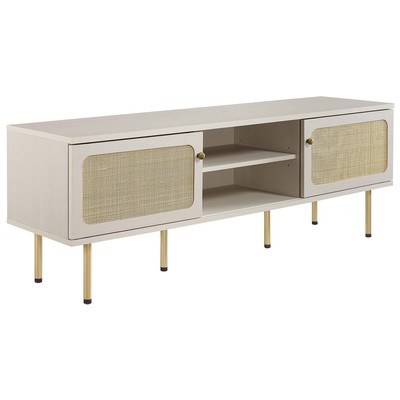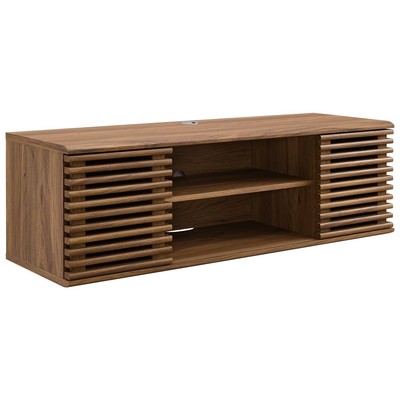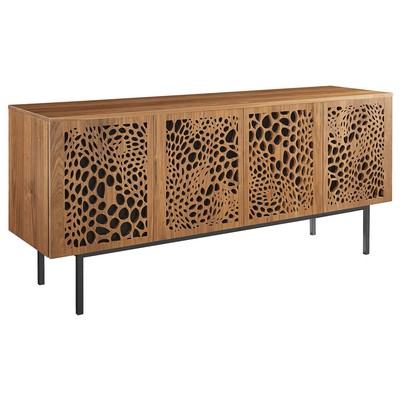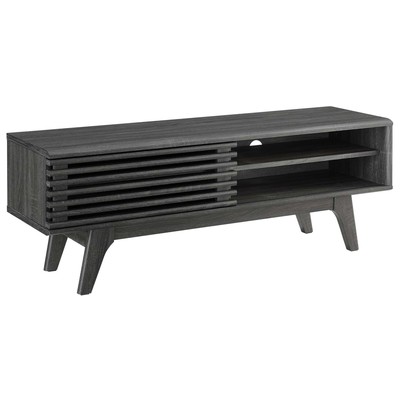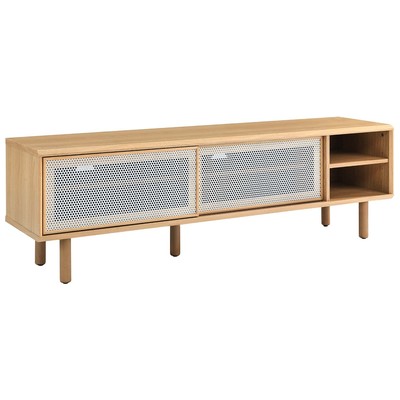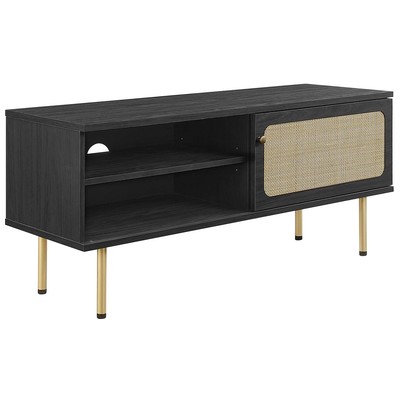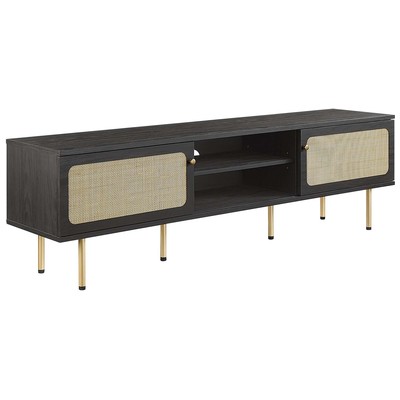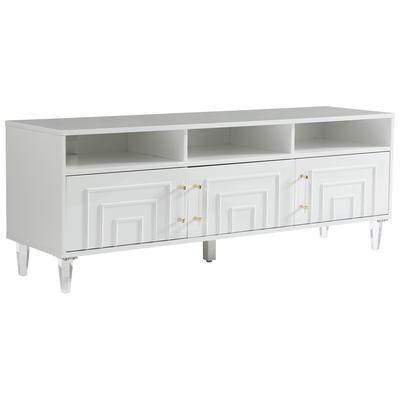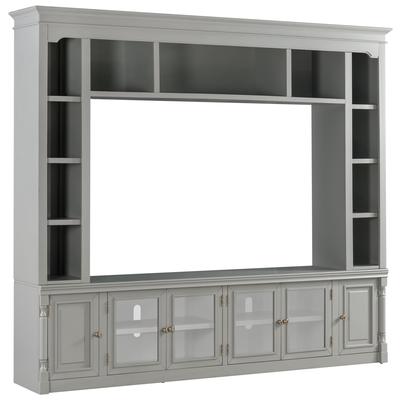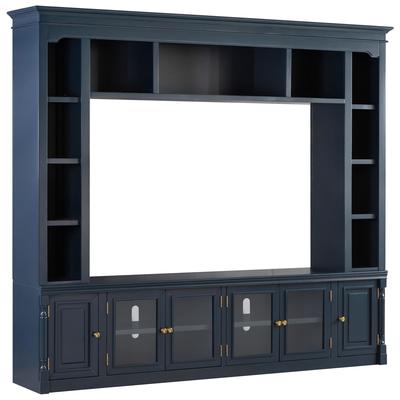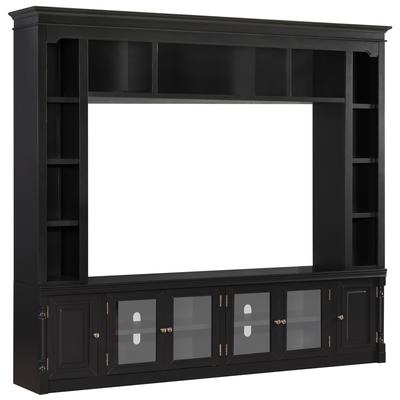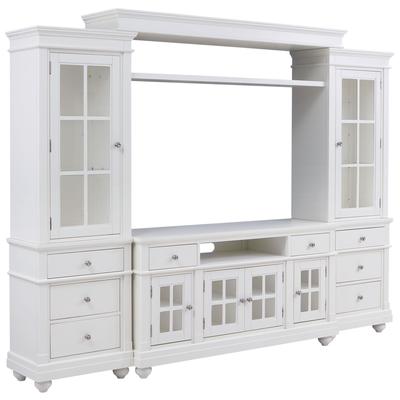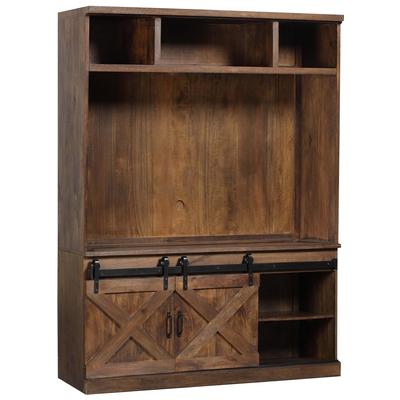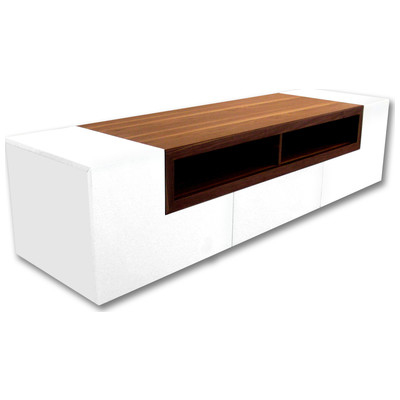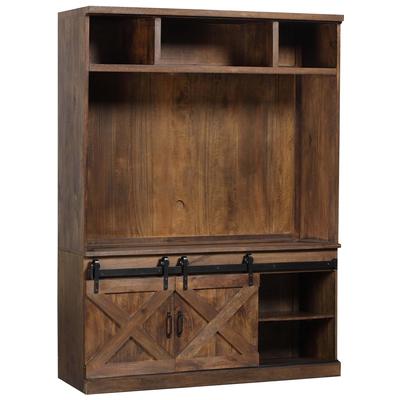A few months ago, I had one of those rare, lucky occasions to significantly upgrade my TV for a very reasonable price. It was an opportunity I simply couldn’t pass up. But blowing my budget on a big screen meant that for the last few months, I’ve had a TV that’s almost ridiculously too large for the TV stand it’s sitting on. Now that I’ve had time to recover from the purchase (and get really sick of my teeny tiny TV stand), I’m in the market for an upgrade. But picking a new TV stand is almost as complicated as picking the TV was in the first place.
The Importance of the Right TV Stand
To me, TV stands have always been just a piece of furniture you put your TV on; a simple item with a simple task. Growing up, I remember when my dad got our family’s first flat screen TV. He spent the better part of a year trying to find the perfect entertainment center to go with it, and wound up returning something like three of the ones he bought. Back then, I thought he was crazy (and he’s definitely a perfectionist). But now that I’m seriously shopping for one myself? A TV stand that’s “just right” is actually quite elusive.
TV Viewing Height
For example, TV stands don’t come at one simple, set, prescribed height. They can be tall or short or even practically flat on the ground. This matters both if you plan to set the TV on the stand and if you plan to mount it. Regardless of where you put it, the center of your TV should be at about eye level for someone sitting on the sofa, and high enough that your coffee table won’t obscure the bottom of the screen. Because not all sofas are the same height, nor are all TVs the same size, coordinating all three can be tricky. Mounting the TV directly to the wall can ensure the center will be right at eye level, but presents the problem of having too much empty space (or not enough) between the top of the TV stand and the bottom of the TV.
Shop TV Stands from Casabianca:
Counterbalance Your Widescreen
As I’ve discovered, width matters, too. Obviously a very narrow stand is going to look stupid with a much wider TV (trust me: really stupid). But regardless of the size of your TV, it’s important to strike a balance between the width of the TV and the stand. If the TV stand is too narrow, the TV will look off balance; if it’s too wide, it can make the TV look smaller than it is. And if they’re exactly the same width, you can wind up with a setup that looks incredibly square. A stand that’s just slightly wider than the TV will give the whole thing a nice sense of balance.
Built-In Wall Mount TV Stands?
There are some TV stands that come with built in mounts. This is a great option for renters who aren’t able to install large brackets into their walls, but otherwise are usually only so-so. While they can get your TV a little higher without a massive stand, they aren’t very adjustable, nor do they offer the seamless look (or white space) of a traditional mount, as both the support bars and the cords going to and from the TV will show beneath it. Unless you opt for a high end entertainment center (see: above), built in mounts are almost always inferior. A sturdy, high quality mount (plus the installation, if you don’t know how to do it yourself) is really worth the investment. A mounted TV offers a cleaner look and a lot more freedom to choose a stand you really like.
Shop TV Stands from Manhattan Comfort:
Accommodating Your Electronics
To me, though, maybe the most important feature of a TV stand is the shelves. If you have a lot of electronics hooked up to your TV – a cable box, bluray player, a gaming console (or two or three), a streaming box and a sound receiver – making sure your TV stand has a place to put them all should be a top priority. Plus, many of these devices – especially gaming consoles – can be prone to overheating, so you want to make sure they’re sitting on an open shelf with adequate ventilation rather than inside a closed cabinet here the heat can get trapped. Before you buy, make an inventory of all the devices you need space for (including any you plan to bundle with the TV) to make sure you have the right kind of shelving and enough room that it won’t look too crowded.
Shop TV Stands from Modway Furniture:
Devices, Media Storage, or Display?
On the other hand, if you don’t have a lot of devices – say, just your cable box and a DVD player – having lots and lots of shelving might not be a top priority. Instead, look for a TV stand that maximizes your media storage, either in the form of drawers (aka my family’s tool box) or cabinets where you can stow DVDs, CDs, books, and so on rather than simply having an open stand with lots of wasted space. Again, you’ll want to consider what you want to store (as well as your other furniture and storage) before you buy, to ensure you get the right type and amount of storage to meet your personal needs.
A good TV stand won’t cost you nearly what you’ll pay for a nice TV. But you should put just as much time and thought into pairing the two. After all, it doesn’t matter how nice your TV is if you don’t have a frame for the picture!
Shop All TV Stands:

